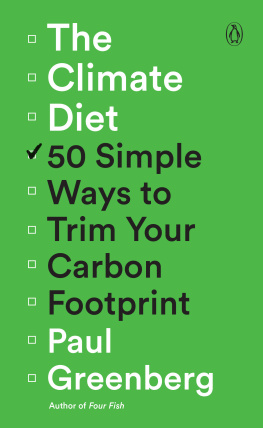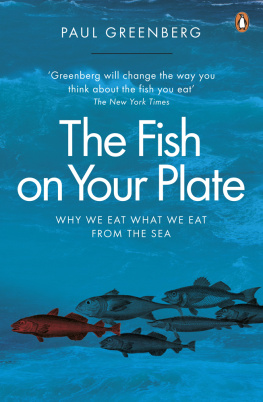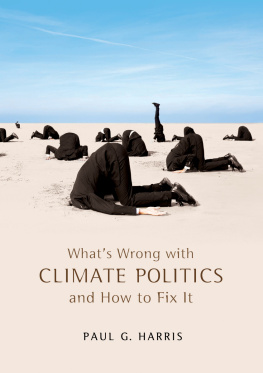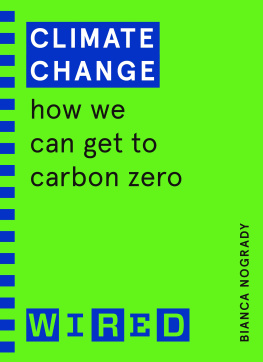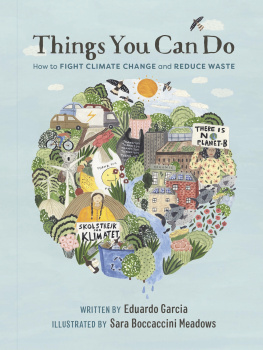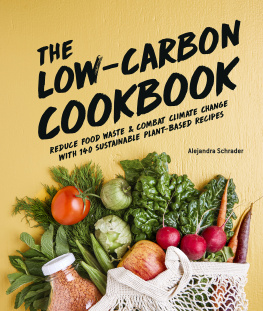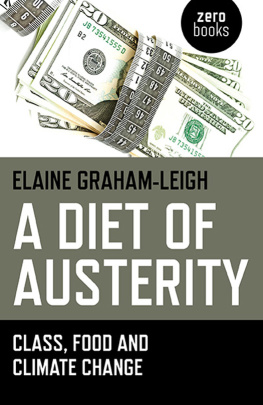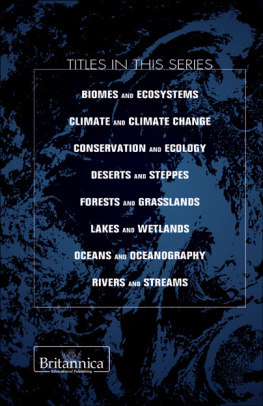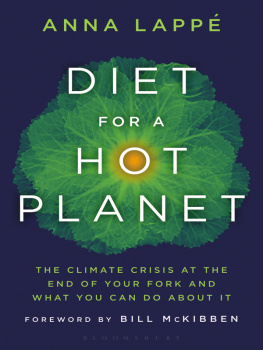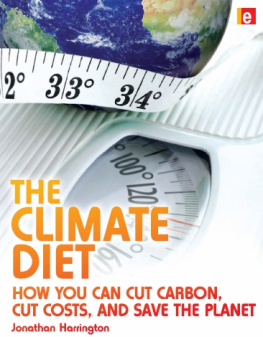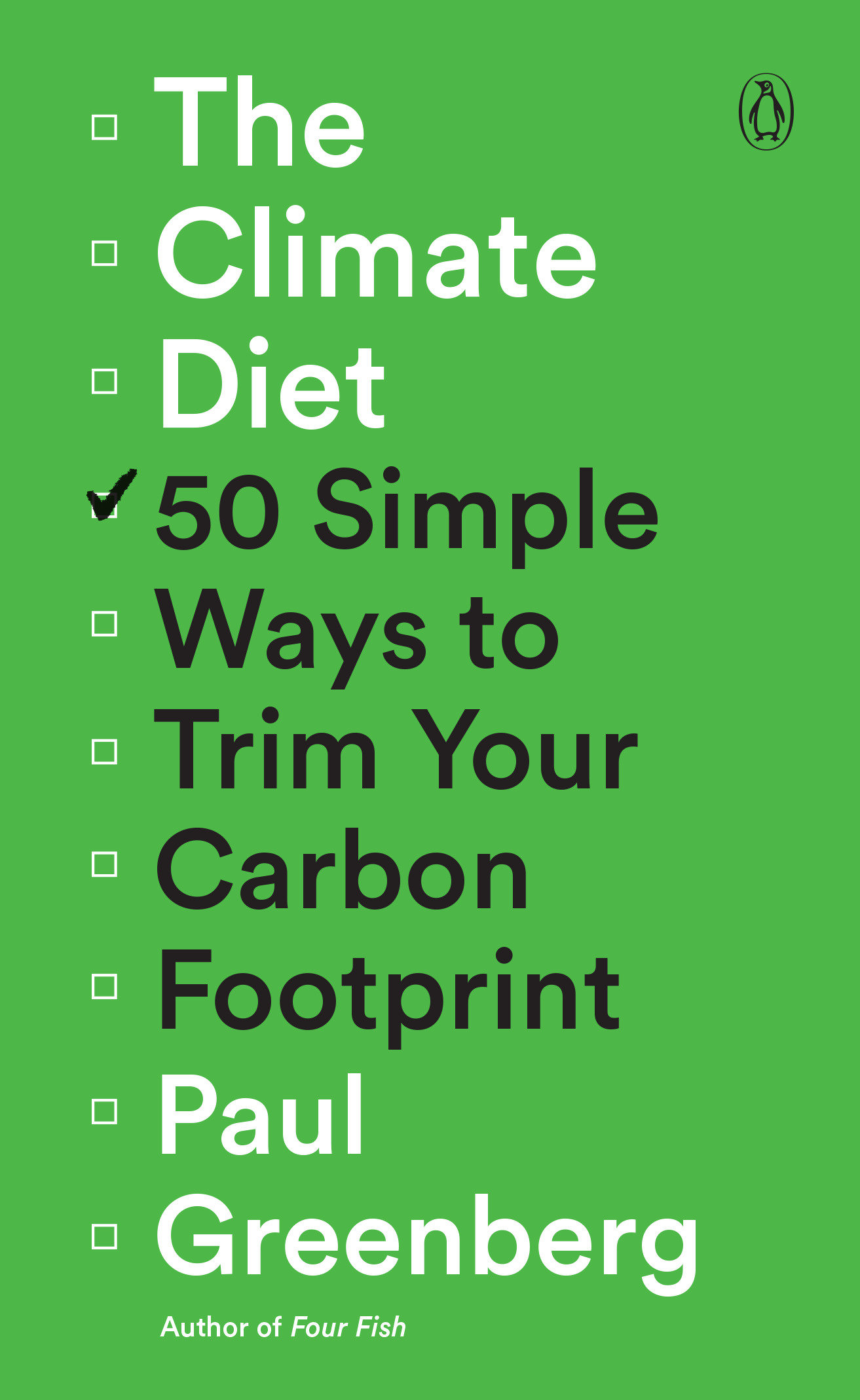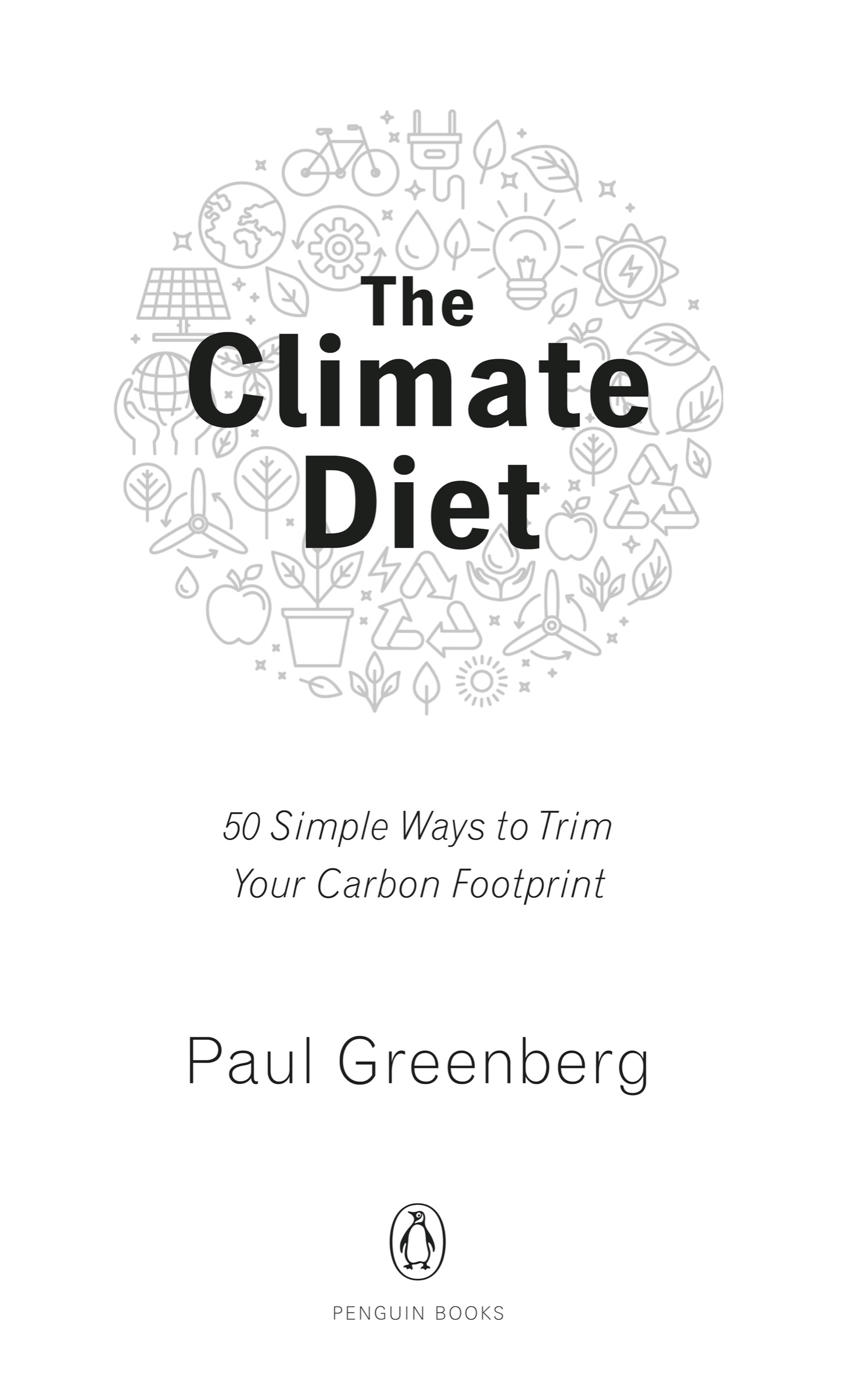Also by Paul Greenberg
The Omega Principle
American Catch
Four Fish
PENGUIN BOOKS
An imprint of Penguin Random House LLC
penguinrandomhouse.com
Copyright 2021 by Paul Greenberg
Penguin supports copyright. Copyright fuels creativity, encourages diverse voices, promotes free speech, and creates a vibrant culture. Thank you for buying an authorized edition of this book and for complying with copyright laws by not reproducing, scanning, or distributing any part of it in any form without permission. You are supporting writers and allowing Penguin to continue to publish books for every reader.
: Copyright Environmental Working Group, www.ewg.org. Reproduced with permission.
: Courtesy of Rainforest Action Network / Banking on Climate Change 2020.
library of congress cataloging-in-publication data
Name: Greenberg, Paul, 1967 author.
Title: The climate diet : 50 simple ways to trim your carbon footprint / Paul Greenberg.
Description: New York : Penguin Books, 2021. | Includes bibliographical references.
Identifiers: LCCN 2020037520 (print) | LCCN 2020037521 (ebook) | ISBN 9780593296769 (trade paperback) | ISBN 9780593296776 (ebook)
Subjects: LCSH: Food--Environmental aspects. | Carbon dioxide mitigation.
Classification: LCC TX357 .G74 2021 (print) | LCC TX357 (ebook) | DDC 613.2dc23
LC record available at https://lccn.loc.gov/2020037520
LC ebook record available at https://lccn.loc.gov/2020037521
Cover design: Christopher Brian King
Paul Greenberg is available for select speaking engagements. To inquire about a possible appearance, please contact Penguin Random House Speakers Bureau at or visit prhspeakers.com.
pid_prh_5.6.1_c0_r0
Nothing shall come of nothing.
William Shakespeare, King Lear
Contents


Introduction:
Nothing or Something?
Should we do nothing or should we do something?
Theres a lot we can ask ourselves about climate change, but in the end, this is the question that really matters in the immediate experience of living our lives. Should we put our very own shoulders to the wheel before us, grinding out, through our own efforts, a transformation of our culture, our economy and, really, life as we know it, or should we lie down before this rising sea of troubles, accept the futility of opposing them, and hope that we somehow survive in what is rapidly becoming a less and less livable world? Do we give up on economically disadvantaged communities that have already been disproportionately punished by choking heat and devastating floods? Do we abandon the hope that our children and grandchildren will live lives free from the famine and civil strife that current models forecast for us in the overheated decades ahead?
If youve picked up this book, youre probably of the do something variety. You are of a mind to take stock of your life, even if your life to date has not been particularly green. Or perhaps you have already done a thing or two to turn your behavior in a more climate-friendly direction, but are not quite sure if those changes are meaningful. Maybe you are a parent or grandparent who has just been on the receiving end of the speech from a teen or twentysomething about how the boomers and Gen Xers have set their descendants up for disaster. Maybe youre wondering if there are a couple of reasonable things you could do to keep the peace with that young person in your life. Or maybe you yourself are that teen or twentysomething coming into adulthood and wondering how you can win over hearts and minds to climate action within your family and your community. In any of these cases, I think the pages that follow can help.
This book came about because I wanted to address an essential disconnect that keeps many Americans on the sidelines of climate action. On the one hand, awareness of the problem has risen markedly in the last few years and many more Americans want to do something to fix it. On the other hand, most scientists and policy makers have correctly identified the crisis as far bigger than the scope of what one person can do. Both perspectives are valid. But when they collide, the psychological effect on the average citizen is paralysis. Where is my place in all this? a person confronted with this dilemma wonders. What can I possibly do that is meaningful?
This paralysis is particularly evident here in the United States. For when you dive down into the numbers, America stands out starkly as a place that is profoundly stuck.
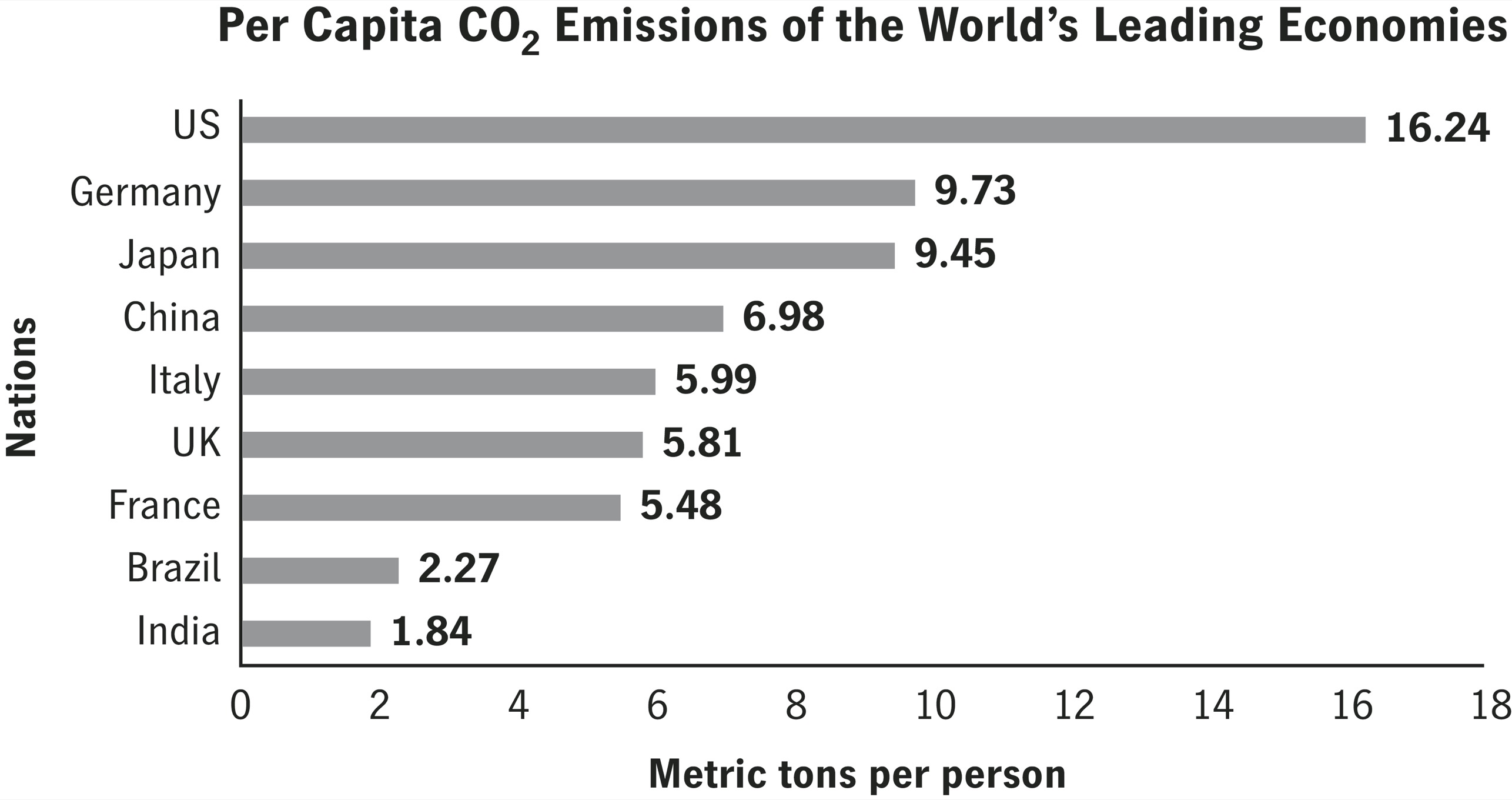
Presently the United States is, per capita, by far the most prodigious emitter of carbon dioxide among the worlds leading economic powers, with a carbon footprint of around 16 metric tons of CO2 per person per year. This is all the more troubling when we compare where we are versus where we need to get. The UN suggests a global target for per capita emissions of a little over 3 tons. India at 1.8 tons of CO2 per person is already there. One could argue that this is only the case because India lacks the industrial infrastructure of more developed nations. But many economic powerhouses show that advanced development and low emissions are not incompatible. France, the UK, and Italy all have per capita emissions around a third of what the United States puts into the atmosphere. China handily bests us as well. Two citizens of the Peoples Republic emit less CO2 than a single American. There is no way to avoid it: the world desperately needs America to go on a climate diet.
But heres the problem: most diets fail. They fail mostly because after a period of bingeing, we set unrealistic goals for reforming our bad ways. In time, self-control breaks down and we hunger to throw open the cupboards and binge again.
Still, some diets do work. Those successful diets tend to be modest in their goals, incorporating small changes over long periods of time. That we need to transform the very roots of the American economy is without doubt and something that must be fought for intensely. But not every well-meaning American will engage in a protracted political struggle. Not all of us are Dr. Seusss raging Loraxes, who speak for the trees. While we might not want to admit it, most of us are go-about-our-business Seussian Whos.
Fortunately, there are smaller maintainable changes that would allow American Whos to go from carbon obese to just a little bit carbon overweight. And, in the end, the transformation of that sizeable carbon-obese American middle to a modest paunch would do more for reducing total global emissions than if a hyper-virtuous 2 percent came to subsist on lentils and solar panels.
To shrink that middle, we need to find climate actions that can be taken up by both coasts and the heartland. And theres evidence to suggest that this is politically tenable. A 2019 Reuters/Ipsos poll showed that a significant majority of Americans believe in the necessity of taking action to fight climate change, irrespective of political affiliation. The challenge lies in getting that majority to actually take action rather than just want action to be taken. So part of this books intent is to propose realistic actions that will get as many hands on deck as possible.

